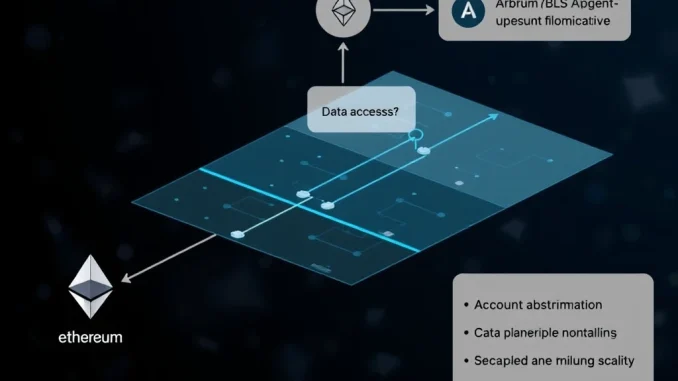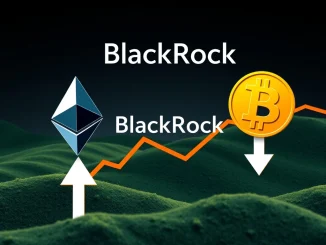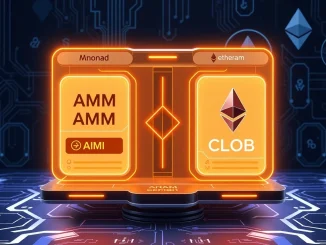
Big news from the Arbitrum ecosystem! Arbitrum has officially rolled out a significant update, ArbOS 40, codenamed “Callisto,” across its flagship networks, Arbitrum One and Arbitrum Nova. This isn’t just any routine patch; it’s a strategic move that integrates key features from Ethereum’s upcoming Pectra upgrade directly onto Arbitrum’s Layer 2 platform. This integration of Arbitrum Pectra features is poised to unlock new capabilities and efficiencies for users and developers alike.
What is the Arbitrum Pectra Upgrade and Why Does it Matter?
You might be hearing about Ethereum’s “Pectra” upgrade, which is the next major network-wide update following the Dencun upgrade. It’s a combination of the Prague and Electra upgrades, focusing on improving the Ethereum network at both the execution and consensus layers. Arbitrum, being a leading Layer 2 scaling solution for Ethereum, often adopts relevant Ethereum Improvement Proposals (EIPs) to maintain compatibility and leverage the latest advancements.
The ArbOS 40 “Callisto” deployment is Arbitrum’s way of getting ahead, bringing select Pectra-bound EIPs to its Layer 2 environment early. This proactive approach allows the Arbitrum ecosystem to benefit from these enhancements sooner, fostering innovation and improving the user experience before they are widely available on Ethereum Layer 1.
Exploring Key Ethereum EIPs Integrated in ArbOS 40
The core of the ArbOS 40 upgrade lies in the integration of specific Ethereum EIPs. These proposals represent significant technical advancements. Let’s break down the key ones included in this Arbitrum deployment:
- EIP-7702: Account Abstraction via Contract Code in TXs
This is a major step towards enhancing user experience and developer flexibility. EIP-7702 allows externally owned accounts (EOAs – your standard MetaMask-style wallets) to temporarily behave like smart contract wallets during a transaction. What does this mean? It paves the way for features like paying gas fees in tokens other than ETH, social recovery of wallets, batching multiple operations into a single transaction, and more seamless interactions without needing full smart contract wallet infrastructure upfront. It bridges the gap between simple EOAs and powerful smart contract wallets, making crypto interactions more user-friendly and programmable. This is a game-changer for achieving true Account Abstraction on Arbitrum. - EIP-2537: BLS12-381 Precompiles
This EIP introduces precompiled contracts for operations related to the BLS12-381 curve. BLS signatures are crucial for certain cryptographic schemes, particularly those used in proof-of-stake consensus mechanisms (like Ethereum’s beacon chain) and potentially in zero-knowledge proofs and other advanced cryptographic applications. By adding precompiles, the cost and complexity of performing these cryptographic operations on-chain are significantly reduced. This is vital for enabling more complex and secure protocols to operate efficiently on Arbitrum. - EIP-2935: History Expiry and Access Methods
This proposal is related to how historical block data is managed and accessed on the blockchain. As blockchains grow, storing and accessing the full history becomes challenging. EIP-2935 outlines mechanisms for managing historical state and providing efficient ways to access older block hashes. While perhaps less immediately impactful for the average user than Account Abstraction, this is crucial for infrastructure providers, explorers, and decentralized applications that require reliable and efficient access to historical blockchain data in a trustless manner.
How ArbOS 40 Boosts Layer 2 Scaling and Functionality
The integration of these EIPs via ArbOS 40 directly contributes to improving Arbitrum’s capabilities as a leading Layer 2 Scaling solution. Here’s how:
- Enhanced Developer Tools: The new precompiles (EIP-2537) make it easier and cheaper for developers to build applications that rely on advanced cryptography. EIP-7702 provides developers with new primitives for building more flexible and user-friendly wallet and application interfaces, simplifying onboarding and interaction.
- Improved User Experience: The push towards Account Abstraction (EIP-7702) is arguably the most visible benefit for end-users. Imagine signing into a dApp with a social login, paying fees with an ERC-20 token, or setting up automated payments – these become much more feasible and streamlined with robust AA support.
- More Efficient Data Retrieval: EIP-2935’s features for accessing historical data benefit applications and services that need to query past states of the chain efficiently and trustlessly. This supports everything from block explorers to analytics platforms and complex smart contracts that interact with historical data.
- Future-Proofing: By adopting EIPs destined for Ethereum Layer 1, Arbitrum maintains strong compatibility and positions itself to seamlessly integrate with future Ethereum advancements, reinforcing its role within the broader ecosystem.
While direct throughput increases aren’t the primary focus of *these specific* EIPs, the enhancements in developer tooling, user experience, and underlying infrastructure efficiency collectively contribute to a more performant and attractive Layer 2 environment, indirectly supporting greater network activity and, by extension, scaling.
The Impact of Account Abstraction on Arbitrum
Let’s focus a bit more on the implications of EIP-7702 and Account Abstraction on Arbitrum. Historically, interacting with Ethereum-like blockchains required users to manage a private key associated with an EOA, which has limitations:
- Gas fees must be paid in the native currency (ETH on L1, ETH on Arbitrum).
- Transactions require a signature directly from the EOA’s private key.
- Complex operations often require multiple transactions.
Smart contract wallets offered more flexibility but were often cumbersome to set up and manage. EIP-7702 offers a middle ground, allowing EOAs to gain contract-like capabilities *during* a transaction. This means developers can build interfaces where:
Users can authorize transactions using different signature schemes (not just ECDSA from a private key).
Gas payments can be sponsored or paid in alternative tokens via a smart contract that handles the actual ETH payment.
Multiple actions (like approving a token and then swapping it) can be bundled into a single transaction.
For Arbitrum, a network already focused on providing a fast and cheap environment for dApps, enhancing Account Abstraction capabilities removes significant friction points for mainstream adoption. It makes interacting with decentralized applications feel more like using traditional web applications, which is critical for onboarding the next wave of users.
Navigating the Future: What’s Next for Arbitrum?
The deployment of ArbOS 40 is a clear signal of Arbitrum’s commitment to continuous improvement and alignment with Ethereum’s roadmap. What does this mean moving forward?
- Developer Adoption: The success of features like EIP-7702 depends heavily on developers building applications that utilize its capabilities. We can expect to see new wallets, dApps, and infrastructure emerge that take advantage of the enhanced Account Abstraction.
- User Migration: As dApps become more user-friendly due to these features, it could attract more users to the Arbitrum network, further solidifying its position in the Layer 2 Scaling landscape.
- Further Upgrades: This is just one step. Arbitrum will likely continue integrating relevant Ethereum EIPs and developing its own network-specific improvements to stay competitive and improve performance.
While the integration is a positive step, the full impact will unfold as the ecosystem adapts. Developers will need to update their protocols to leverage the new EIPs, and users will need to become familiar with new types of wallet interactions made possible by enhanced Account Abstraction. However, the foundation for a more flexible, efficient, and user-friendly Arbitrum has been significantly strengthened.
Summary: Arbitrum’s Bold Step Forward
Arbitrum’s deployment of ArbOS 40, integrating key features from the upcoming Arbitrum Pectra (Ethereum Pectra) upgrade, marks a pivotal moment for the network. By bringing advanced Ethereum EIPs like EIP-7702 for Account Abstraction, EIP-2537 for cryptographic efficiency, and EIP-2935 for data access to its Layer 2 environment, Arbitrum is not only enhancing its technical capabilities but also significantly improving the potential user experience and developer toolkit. This strategic move reinforces Arbitrum’s commitment to innovation and its role as a leading platform for Layer 2 Scaling, paving the way for a more accessible and powerful decentralized future.



